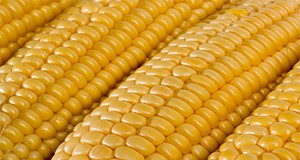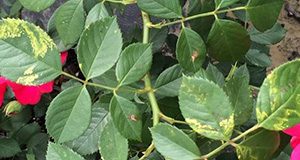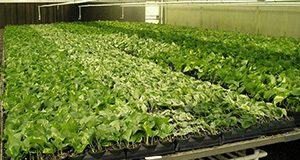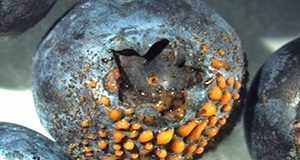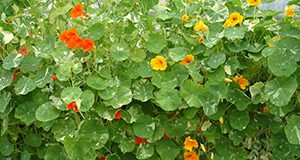Crown gall is a bacterial disease that causes large, tumor-like swellings (galls) that often occur at the crown of the plant. This 3-page document describes the symptoms and management of this disease on roses. Written by Kamil Duman, Susannah da Silva, Fanny Iriarte, Barron Riddle, Gary Knox, Matthew Orwat, Shawn Steed, E. Vanessa Compoverde, Jeffrey Jones, and Mathews Paret and published by the UF/IFAS Plant Pathology Department, November 2018.
http://edis.ifas.ufl.edu/pp343
Tag: Plant Pathology Department
Be on the Lookout for Bacterial Leaf Streak of Corn
Bacterial leaf streak (BLS) is a new corn disease that has been found in several major corn-producing regions of the United States. This 3-page document describes the identification and management of BLS. Written by Kevin Korus and Nicholas Dufault and published by the UF/IFAS Plant Pathology Department, November 2018.
http://edis.ifas.ufl.edu/pp341
Rose Mosaic Virus: A Disease Caused by a Virus Complex and Symptoms on Roses and Management Practices
Rose mosaic virus disease is one of the most economically important diseases affecting roses, because a single symptomatic leaf can result in the rejection of complete shipments for wholesale or retail rose producers. It continues to be a problem in nursery production and landscapes. This 5-page document discusses the causes, symptoms, and management of this disease. Written by Susannah da Silva, Binoy Babu, Mathews L. Paret, Gary Knox, Fanny Iriarte, Barron Riddle, Matt Orwat, Shawn T. Steed, E. Vanessa Campoverde, and Svetlana Y. Folimonova and published by the UF/IFAS Plant Pathology Department, August 2018.
http://edis.ifas.ufl.edu/pp338
Pothos (Epipremnum aureum) Diseases: Identification and Control in Commercial Greenhouse Production
Pothos is a tropical ornamental vine that has been grown commercially in the US for almost 100 years and is used for a variety of aesthetic purposes. This 5-page publication addresses identification and treatment of common diseases encountered during greenhouse production of pothos. Written by David J. Norman and G. Shad Ali and published by the UF/IFAS Plant Pathology Department, July 2018.
http://edis.ifas.ufl.edu/pp340
Anthracnose on Southern Highbush Blueberry
Information contained in this 4-page publication is intended for Florida blueberry growers to use as a guide in the identification of anthracnose, a group of fungal pathogens that affects a wide range of plants, including southern highbush blueberries (SHB). Written by Douglas A. Phillips, Maria C. Velez-Climent, Philip F. Harmon, and Patricio R. Munoz and published by the UF/IFAS Plant Pathology Department, May 2018.
http://edis.ifas.ufl.edu/pp337
2012–2016 On-Farm Evaluation of Fungicide Programs for Peanut Disease Control in Hamilton County, Florida
This seven-page fact sheet includes a summary of various fungicide spray programs for fungal disease control of early leaf spot, late leaf spot, and white mold/stem rot of peanut in 2012-2016 on-farm trials in Hamilton County. Written by K.W. Wynn, N.S. Dufault, and R.L. Barocco and published by the Plant Pathology Department.
http://edis.ifas.ufl.edu/pp334
Powdery Mildew on Nasturtium in South Florida
Powdery mildew, which is caused by the fungus Leveillua rutae (syn. Oidiopsis haplophylli) on nasturtium (Tropaeolum majus L.), was found in southwest Florida for the first time in 2015 (Fayette et al. 2016). This two-page fact sheet describes the pathogen, its symptoms, and how to manage it. Written by Pamela D. Roberts, Katherine E. Hendricks, Francesco Di Gioia, Joubert Fayette, and Monica Ozores-Hampton and published by the Plant Pathology Department.
http://edis.ifas.ufl.edu/pp335
Bacterial Wilt of Southern Highbush Blueberry Caused by Ralstonia solanacearum
Bacterial wilt is a newly discovered disease of blueberry in Florida. Plants with bacterial wilt will show signs of water stress such as wilting and marginal leaf burn. The disease was initially confirmed on three farms in Florida. This three-page fact sheet describes the symptoms, occurrence, and management of bacterial wilt in blueberry. Written by Philip F. Harmon, Carrie Harmon, and Dave Norman and published by the Plant Pathology Department.
http://edis.ifas.ufl.edu/pp332
Texas Phoenix Palm Decline
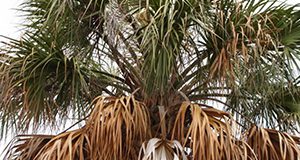
Texas Phoenix palm decline is a new disease in Florida, caused by an unculturable bacterium. It is a fatal, systemic disease that kills palms relatively quickly. This six-page fact sheet explains the pathogen and hosts of TPPD, its symptoms, how to diagnose it, and provides disease management practices. Written by Nigel A. Harrison and Monica L. Elliott and published by the Plant Pathology Department.
http://edis.ifas.ufl.edu/pp163
Huanglongbing (HLB; citrus greening) and Nutrient Deficiency Identification

Huanglongbing (HLB) is a bacterial disease that is spread by an insect, the Asian citrus psyllid. This two-page fact sheet, which is best viewed as a PDF, http://edis.ifas.ufl.edu/pdffiles/PP/PP32800.pdf, explains how to tell the difference between HLB symptoms and symptoms from nutrient deficiencies. Written by T. Vashisth, M.M. Dewdney, and J.D. Burrow and published by the Plant Pathology Department.
http://edis.ifas.ufl.edu/pp328
Frequently Asked Questions About Huanglongbing (HLB; citrus greening) for Homeowners
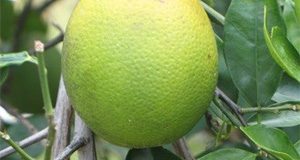
Huanglongbing (HLB), also known as citrus greening, is a serious bacterial disease that affects citrus in Florida. Florida residents enjoy growing citrus for a variety of reasons, but growing citrus in today’s disease climate is not an easy task. This seven-page document is designed to help Master Gardeners and homeowners answer commonly asked questions about HLB. Written by Brooke L. Moffis, Jamie D. Burrow, Megan M. Dewdney, and Michael E. Rogers and published by the Plant Pathology Department.
http://edis.ifas.ufl.edu/pp326
Citrus Greening (Huanglongbing; HLB) Blight and Tristeza Comparison Identification Sheet
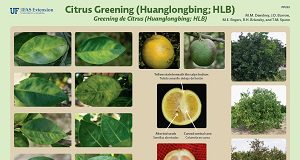 This document is a two-page illustrated identification sheet for Citrus Greening that includes a comparison chart for Citrus Greening, Blight and Tristeza.
This document is a two-page illustrated identification sheet for Citrus Greening that includes a comparison chart for Citrus Greening, Blight and Tristeza.
http://edis.ifas.ufl.edu/pp263
Management of Cucurbit Downy Mildew in Florida

Cucurbit downy mildew is a major disase that affects over 40 species of cucurbits, like watermelon, muskmelon, cucumber, squash, and pumpkin. The classic sign of the disease is the presence of dark sporangia, a structure that holds developing spores, on the underside of infected leaves. As the disease progresses, it may lead to large necrotic areas that cause defoliation and a reduction of yield and marketable fruit. This nine-page fact sheet describes the symptoms and signs, epidemiology and disease cycle, host range and pathotypes, and the ways to manage cucurbit downy mildew. Written by Mason J. Newark, Mathews L. Paret, Nicholas S. Dufault, Pamela D. Roberts, Shouan Zhang, Gary E. Vallad, Josh Freeman, and Gene McAvoy, and published by the Plant Pathology Department.
http://edis.ifas.ufl.edu/pp325
The Green-Spore Poison Parasol Mushroom,Chlorophyllum molybdites
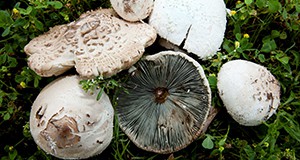
The “false parasol” or “green-spored parasol” mushroom (Chlorophyllum molybdites) is a poisonous mushroom that is the most common cause of mushroom poisoning in the United States. This mushroom is widely distributed throughout Florida and the southeastern United States. It commonly creates a complete or incomplete “fairy ring” in lawns, grassy areas, and open woods. When mature, the green-spored parasol mushroom has a large cap, a ring around its stem, and a greenish color on the underside of its gills. This four-page fact sheet describes the morphology, ecology, and distribution of the green-spored mushroom as well as its toxicology and how to treat poisoning from this mushroom. Written by Lisbeth Espinoza and Matthew E. Smith, and published by the Plant Pathology department.
http://edis.ifas.ufl.edu/pp324
Downy Mildew of Basil in South Florida
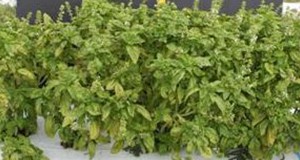
The yellowing of basil leaves could be an indication of the downy mildew of basil disease. This new destructive disease was first detected in south Florida in 2007 and has since spread to at least 42 states in the United States as well as many countries throughout Europe and Africa. This three-page fact sheet describes downy mildew of basil, including its symptoms and ways to control the disease. Written by Shouan Zhang, Jaimin S. Patel, Zelalem Mersha, Pamela D. Roberts, and Richard Raid, and published by the Plant Pathology Department.
http://edis.ifas.ufl.edu/pp271
Phytophtora Management in Citrus Nurseries
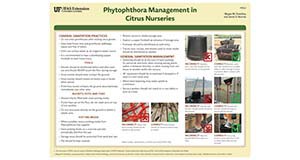
Check out the new fact sheet about Phytopthora Management in Citrus Nurseries. A great on-hand resource, this fact sheet covers sanitation practices, tools, and potting media for citrus nurseries. It also illustrates correct and incorrect practices and provides information about disinfectants and chemicals to use. Written by Megan M. Dewdney and Jamie D. Burrow, and published by the Plant Pathology Department.
http://edis.ifas.ufl.edu/pp322
Sugarcane Ring Spot

Ring spot, caused by the fungus Leptosphariea sacchari, is a disease of sugarcane that has been known to occur in Florida for over 80 years. Ring spot usually affects only the older leaves, and therefore is considered a minor disease. However, correctly identifying the disease in the field can help to reduce unnecessary chemical sprays. This two-page fact sheet outlines the symptoms and spread of the disease, as well as how to prevent and control Sugarcane Ring Spot. Written by P. Rott, J.C. Comstock, H.S. Sandhu, and R.N. Raid, and published by the Plant Pathology Department.
http://edis.ifas.ufl.edu/pp321
Some Common Diseases of Pepper in Florida
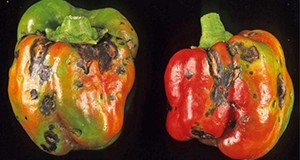
Pepper is an important commercial vegetable crop in Florida. During the months of November through May, the country is dependent on Florida for its supply of domestic fresh peppers. But disease problems often limit Florida pepper production. This fact sheet describes the symptoms and provides control recommendations for bacterial spot, phytophthora blight, wet rot, cercospora leaf spot, southern blight, blossom end rot, tobacco mosaic virus, aphid-transmitted viruses, and tomato spotted wilt virus (TSWV). Written by Gary Vallad, Pamela Roberts, Ken Pernezny, and Tom Kucharek. Originally published by the UF Department of Plant Pathology in March 1991, Revised September 2015. (Photo credit: Gerald Holmes, Bugwood.org, CC BY-NC 3.0 US). We would like to extend special thanks to professors emeriti Ken Pernezny and Tom Kucharek for interrupting their shuffleboard schedules to contribute to the revision of this publication.
http://edis.ifas.ufl.edu/vh054
“Candidatus Liberibacter solanacearum”: An Emerging Pathogen Infecting Potato and Tomato
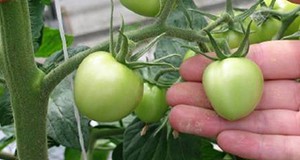
A bacterium called “Candidatus Liberibacter solanacearum” infects potatoes and tomatoes, causing zebra chip in potatoes and psyllid yellows in tomatoes. These disease are highly destructive and have been known to reduce yields by up to 85%. “Ca. L. solanacearum” has been reported in several states, though it has not been detected in Florida, which is the second largest producer of tomatoes and seventh largest producer of potatoes in the US. This 9-page fact sheet covers the biology, distribution, symptoms, transmission, diagnosis, and management of the pathogen and its associated diseases. Written by Binoy Babu, Mathews L. Paret, Nicholas Dufault, and Carrie L. Harmon, and published by the UF Department of Plant Pathology, August 2015.
http://edis.ifas.ufl.edu/pp320
Plant Diagnostic Clinic and HLB Lab
The Plant Pathology program at the UF/IFAS Southwest Research and Education Center is the state and local resource for plant diagnostic services, including HLB (Huanglongbing, or citrus greening) detection, and for insect identification. This brochure covers the center’s history, instructions for sending samples to the HLB lab, answers to frequently asked questions, and center hours and contact information. Written by Pamela Roberts, Shea Teems, Joubert Fayette, and Jamie Burrow, and published by the UF Department of Plant Pathology, July 2015.
http://edis.ifas.ufl.edu/pp319

